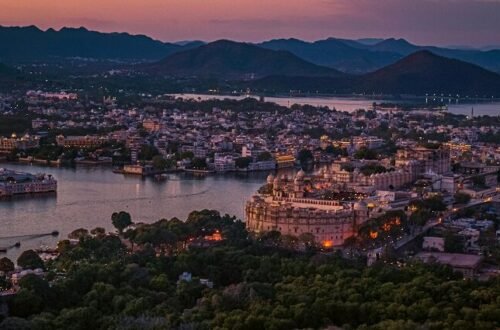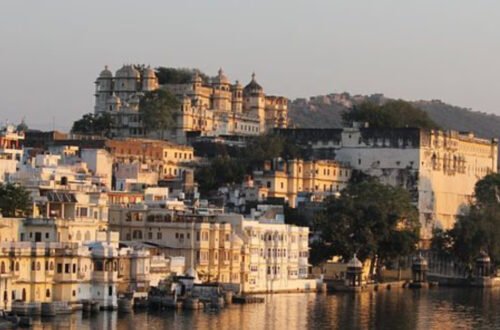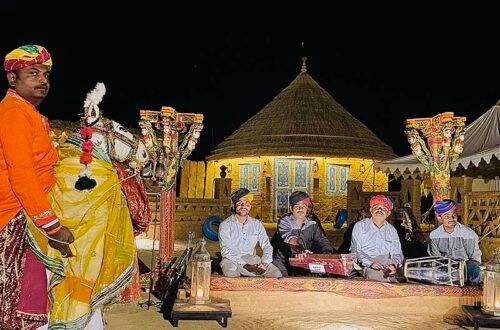Jaisalmer, often referred to as the “Golden City,” is not just an architectural marvel built from yellow sandstone, but a living canvas of Rajasthani culture, heritage, and desert life. From intricately carved havelis that echo tales of opulence to endless desert horizons that whisper ancient legends, this city offers an immersive experience unlike any other. Here’s a detailed journey through the soul of Jaisalmer—layer by layer.
The Golden Foundations: Exploring the Fort and Old City
At the heart of Jaisalmer stands the majestic Jaisalmer Fort, one of the few living forts in the world where people still reside and trade. Built in 1156 AD by Rawal Jaisal, it rises from Trikuta Hill and glows in golden hues at sunrise and sunset. Within its walls lie Jain temples, royal palaces, and local shops selling handcrafted goods.
Wandering through the narrow lanes of the fort gives insight into medieval architecture and the lives of its inhabitants. Its massive walls, though weathered by time, have stood resilient through centuries of war, trade, and pilgrimage.
Living Art: The Grandeur of Patwon Ki Haveli and Salim Singh Ki Haveli
Jaisalmer’s havelis are more than residences; they are expressions of legacy. Patwon Ki Haveli is actually a cluster of five havelis, commissioned by a wealthy trader family in the 18th century. The intricate latticework, frescoed walls, and jharokhas (balconies) here showcase the finesse of Rajasthani artisanship.
Salim Singh Ki Haveli, with its unique peacock-shaped roof and narrow structure, is another architectural wonder. Its design reflects not only artistic ambition but also the socio-political statement of its era. Visitors are often drawn to the stories etched in its walls—stories of ambition, trade, and aristocracy.
Faith and Devotion: The Temples of the Golden City
Jaisalmer also holds deep spiritual significance. The seven Jain temples within the fort, dating back to the 12th century, are built in the Dilwara style and dedicated to various Tirthankaras. These temples, crafted from yellow sandstone, contain detailed sculptures, marble idols, and religious manuscripts preserved for centuries.
Outside the fort, the Tanot Mata Temple stands as a symbol of faith during the 1965 Indo-Pak war, where unexploded bombs failed to destroy the shrine. Pilgrims and history enthusiasts alike visit this temple not just for its sanctity, but also for its historical relevance.
The Open Desert: Shifting Sands and Cultural Echoes
Beyond the fortified city, the Thar Desert offers a contrasting yet complementary landscape. The Sam Sand Dunes, roughly 40 km away, provide a sensory experience of Rajasthan’s rural life. Camel rides during golden hour, local folk music echoing under starlit skies, and glimpses of traditional desert villages reveal another dimension of Jaisalmer’s soul.
Visitors looking to traverse this terrain conveniently often opt for Taxi Service in Jaisalmer to ensure they explore both city and desert at their own pace.
Cultural Threads: Folk Music, Puppetry, and Local Crafts
Jaisalmer’s soul thrives not just in its monuments, but also in its living traditions. Manganiyar musicians, puppet artists, and local craftsmen keep age-old arts alive. The Desert Cultural Centre and Museum offers a curated insight into these traditions, hosting performances that trace their origins back generations.
Hand-embroidered textiles, mirror work, camel leather goods, and silver jewelry are common finds in Jaisalmer’s markets, especially around Sadar Bazaar and Bhatia Bazaar. These crafts are not merely decorative but carry with them stories of community, identity, and sustainability.
Timeless Views: Gadisar Lake and Sunset Points
Gadisar Lake, once the city’s water source, now serves as a tranquil escape for locals and tourists alike. Surrounded by chhatris (cenotaphs), shrines, and ghats, the lake reflects the skyline of Jaisalmer in a poetic light. A visit during early morning or dusk captures a serene mood, far from the bustle of city life.
Sunset viewpoints around Vyas Chhatri and Bada Bagh offer panoramic views where the city’s golden hue deepens, merging with the desert horizon. This is where Jaisalmer truly earns its title as the “Golden City.”
Navigating Jaisalmer: From Fort to Dunes with Local Insight
Planning an efficient journey through Jaisalmer requires more than just maps—it calls for local understanding. Travelers often find value in hiring a Jaisalmer Sightseeing Taxi to cover the city’s historic and natural landmarks with ease. Such services typically include experienced drivers who double as informal guides, offering insights into culture and lesser-known sites.
Conclusion: Embracing the Essence of Jaisalmer
Experiencing Jaisalmer is not about checking places off a list—it’s about absorbing its rhythm. Whether you are gazing at centuries-old carvings, listening to desert melodies, or watching the sun sink into the dunes, the city invites you to pause and connect. From its royal havelis to boundless sands, Jaisalmer is a layered narrative that unfolds with every step.
This journey—from haveli to horizon—is not just a tour. It’s a timeless exploration of Rajasthan’s heritage, carried on sandstone winds and sung in the silence of the desert night.





